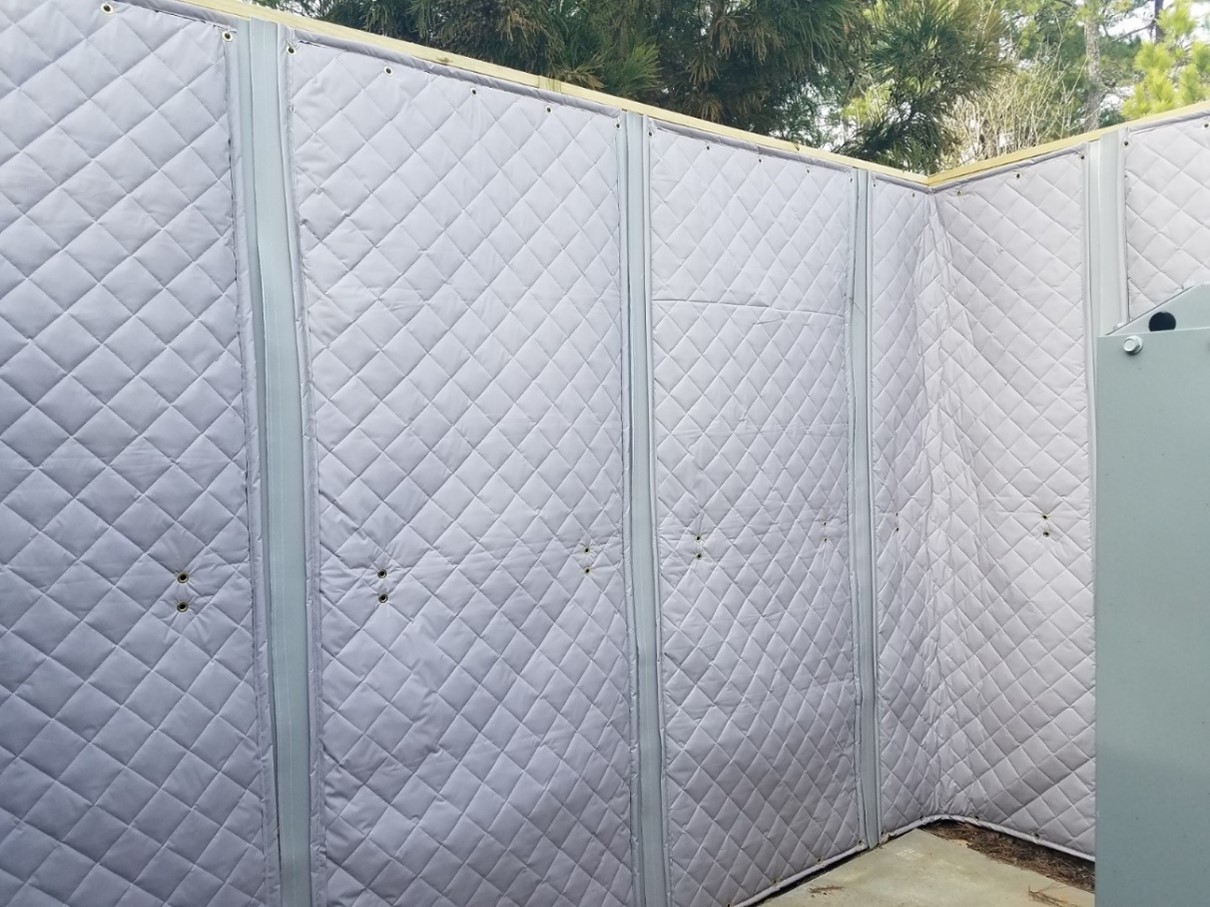Have you ever wondered how fences can help reduce noise in your neighborhood? Noise pollution can be a major issue, especially if you live in a busy area or near a highway. But did you know that a well-designed fence can actually help reduce the amount of noise that reaches your home? In this article, we’ll delve into the role of fences in noise reduction and explore how they can make a difference in creating a peaceful environment.
We’ll discuss the different types of fences that are effective in noise reduction and how they work. From solid wood or composite fences to those made with acoustic materials, there are various options to consider. We’ll also look at the height and placement of the fence, as well as other factors that can impact its noise reduction capabilities. So, if you’re interested in learning more about how fences can help minimize noise pollution and create a quieter space, keep reading our article on the role of fences in noise reduction. We’ve got all the information you need!
The Role of Fences in Noise Reduction

Introduction
In our increasingly noisy world, finding peace and tranquility can be a challenge. Excessive noise pollution not only disrupts our well-being but also has adverse effects on our health. Thankfully, fences can play a significant role in reducing noise and creating a peaceful environment. In this article, we will delve into the importance of noise reduction, explore the functionality and design considerations of noise-reducing fences, discuss different types of fences, and address the various benefits and environmental impacts of such fences.
Understanding the Impact of Noise Pollution
Excessive noise pollution has become a prevalent issue in both urban and rural areas. From traffic noise to construction sounds, our daily lives are bombarded by unwanted noise. This not only affects our mental health and concentration but also poses serious risks to our physical well-being. Prolonged exposure to high levels of noise can lead to stress, sleep disturbances, cardiovascular diseases, and hearing loss. It is crucial to address this issue and create peaceful environments to safeguard our health.
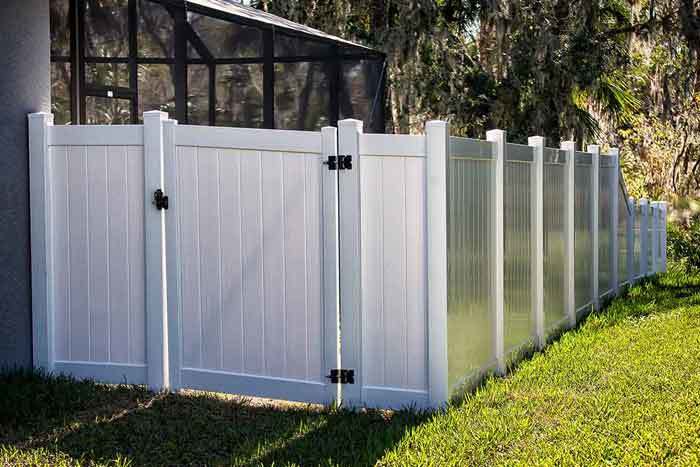
Effects of Excessive Noise on Human Health
The continuous exposure to excessive noise has numerous detrimental effects on our health. High noise levels can cause stress, leading to increased heart rate, elevated blood pressure, and disturbed sleep patterns. Chronic noise exposure can also impair cognitive function and hinder learning in both children and adults. Additionally, noise pollution has been linked to mental health issues such as anxiety, depression, and decreased overall well-being. Therefore, taking steps to reduce noise levels is imperative for maintaining optimal health and well-being.
The Significance of Creating a Peaceful Environment
Living in a peaceful environment is essential for our overall quality of life. A peaceful environment allows us to relax, unwind, and enjoy our surroundings. By reducing noise levels, we can create a harmonious atmosphere that promotes well-being and improves our daily living experience. Fences play a crucial role in achieving this goal by acting as barriers to noise, enhancing privacy, security, and even property value. Furthermore, they provide protection from external elements and contribute to a more sustainable and eco-friendly living environment.
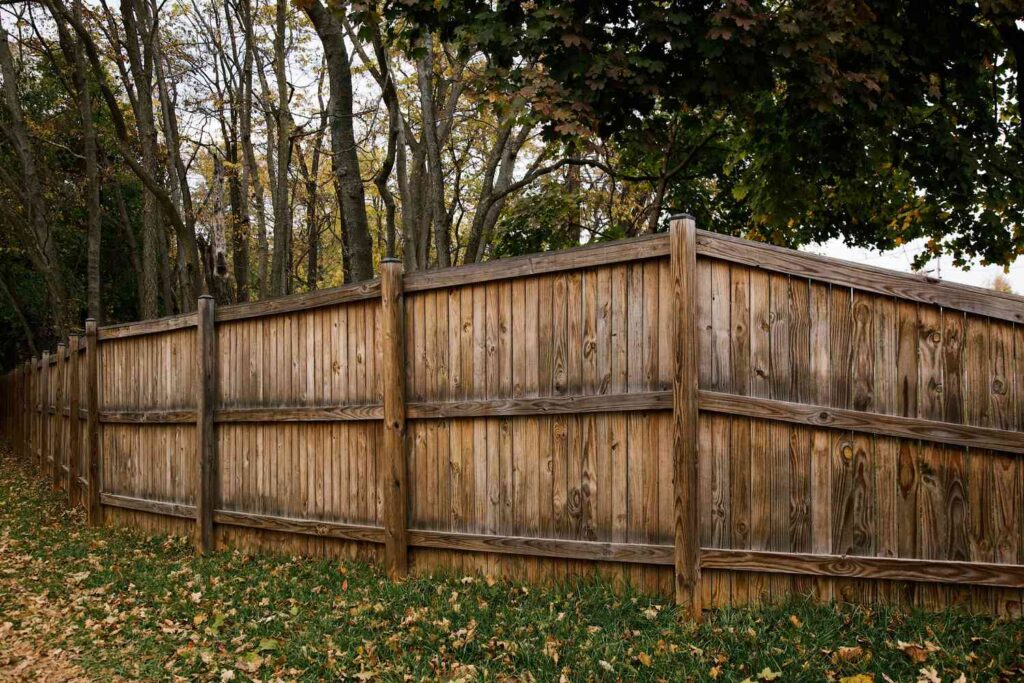
Introduction to Fences
Definition and Purpose of Fences
Fences are physical barriers erected around a property to demarcate boundaries, provide security, and enhance privacy. They can be made from various materials such as wood, vinyl, metal, or composite materials. Fences serve multiple purposes, including noise reduction, aesthetic appeal, security, and the prevention of trespassing.
Different Types of Fences Available
When it comes to noise reduction, various types of fences are available, each with its strengths and limitations. Some commonly used fence types include wooden fences, vinyl fences, metal fences, composite fences, and acoustic barrier fences. Each type has specific characteristics that make them more or less suitable for noise reduction purposes.
Materials Used in Fence Construction
Fences can be constructed using a wide range of materials, each offering unique qualities and benefits. Wood is a popular choice due to its aesthetic appeal, affordability, and versatility. Vinyl fences are known for their low maintenance requirements and longevity. Metal fences, such as aluminum or steel, provide durability and enhanced security. Composite materials offer a blend of characteristics from different materials, resulting in a long-lasting and low-maintenance option for noise reduction fences.
Functionality of Fences in Noise Reduction
How Fences Can Act as a Barrier to Noise
Fences act as physical barriers that absorb, reflect, and block sound waves from entering or leaving a property. The ability of a fence to reduce noise depends on various factors, including its height, thickness, and the materials used. By strategically placing noise-reducing fences around a property, it is possible to create a more peaceful and quiet environment.
Factors to Consider When Choosing a Noise-Reducing Fence
When selecting a fence for noise reduction purposes, several factors should be taken into consideration. The height and thickness of the fence are crucial aspects that determine its effectiveness in reducing noise. The materials used should possess sound-absorbing properties and be capable of withstanding outdoor conditions. Additionally, factors such as local regulations, budget constraints, and the desired aesthetic appeal should also be considered.
Effectiveness of Different Types of Fences in Reducing Noise
Different types of fences have varying levels of effectiveness in reducing noise. For example, wooden fences offer moderate noise reduction but require proper maintenance to retain their effectiveness. Vinyl fences provide good noise reduction capabilities and are relatively low maintenance. Metal fences, particularly those with acoustic barrier features, offer excellent noise reduction properties. Understanding the strengths and limitations of each fence type is crucial in making an informed decision.
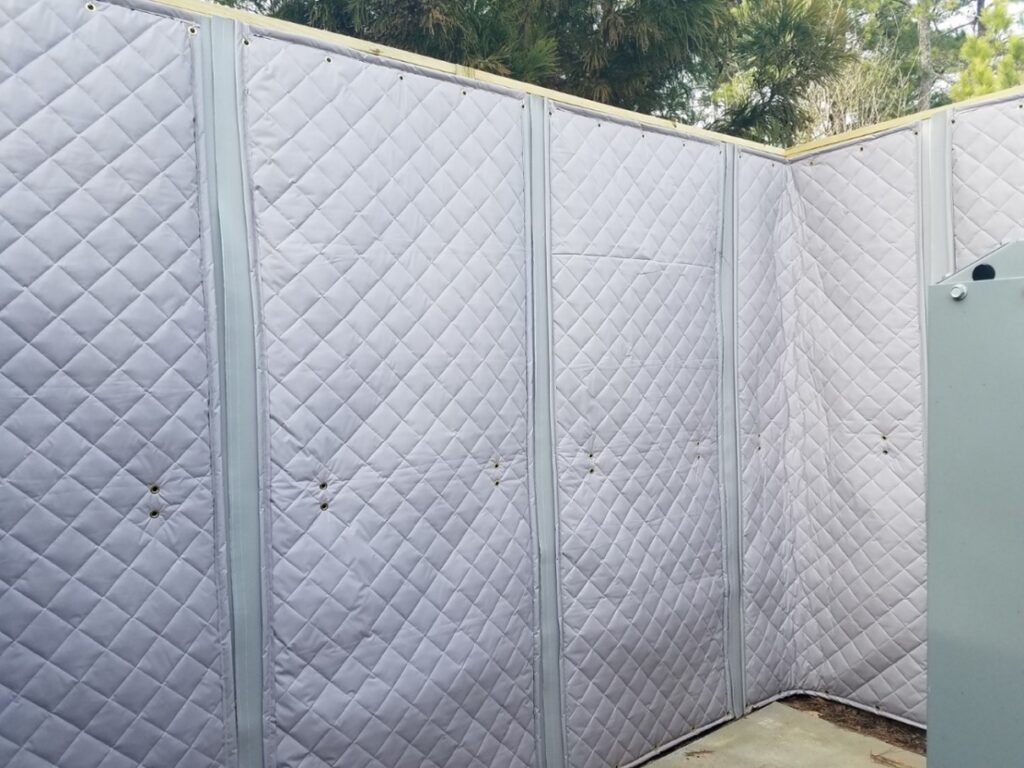
Design Considerations for Noise Reduction Fences
Incorporating Sound-Absorbing Materials
In the design and construction of noise reduction fences, incorporating sound-absorbing materials can significantly enhance their performance. Sound-absorbing materials, such as dense wood or composite panels with integrated insulation, can effectively absorb and dampen sound waves, reducing noise transmission. By incorporating these materials into the fence structure, the overall noise reduction capabilities can be significantly improved.
Aesthetically Pleasing Fence Designs for Noise Reduction
While noise reduction is a crucial objective, it is also important to consider the aesthetic appeal of the fence. With advancements in fence design, noise reduction fences can now be visually appealing and seamlessly blend into the surrounding environment. By carefully choosing fence styles, colors, and textures, noise reduction fences can enhance the overall aesthetic value of a property.
Optimal Height and Thickness for Noise Reduction Purposes
The height and thickness of a noise reduction fence play a vital role in its effectiveness. As a general guideline, noise reduction fences should be tall enough to obstruct direct sound waves and thick enough to absorb and scatter sound energy. The exact height and thickness requirements depend on various factors, including the noise source, distance from the source, and local regulations. Consulting with experts or professionals can help determine the optimal height and thickness for maximum noise reduction.
Choosing the Right Fence for Noise Reduction
Wooden Fences and Their Noise Reduction Capabilities
Wooden fences are a popular choice for noise reduction purposes due to their moderate sound absorption properties. The density of the wood and its thickness influence the level of noise reduction provided. Additionally, wooden fences can be designed with overlapping boards or solid panels, further enhancing their noise reduction capabilities. However, it is important to note that regular maintenance, such as staining or sealing, is necessary to ensure the longevity and effectiveness of wooden noise reduction fences.
Vinyl Fences: Advantages and Disadvantages for Noise Reduction
Vinyl fences are known for their low maintenance requirements and longevity. They offer good noise reduction capabilities due to the solid nature of vinyl panels. Additionally, vinyl fences do not warp, rot, or require regular painting like wooden fences. However, it is important to consider that the thickness of the vinyl panels plays a significant role in the level of noise reduction. Thicker panels are more effective in reducing noise compared to thinner ones.
Metal Fences for Effective Noise Reduction
Metal fences, such as aluminum or steel, can also be utilized for effective noise reduction. When designed with solid metal panels or integrated sound-absorbing materials, these fences offer excellent noise reduction capabilities. Metal fences are durable, low maintenance, and can withstand harsh weather conditions. However, it is important to ensure proper installation to minimize sound leakage through gaps or openings in the fence structure.
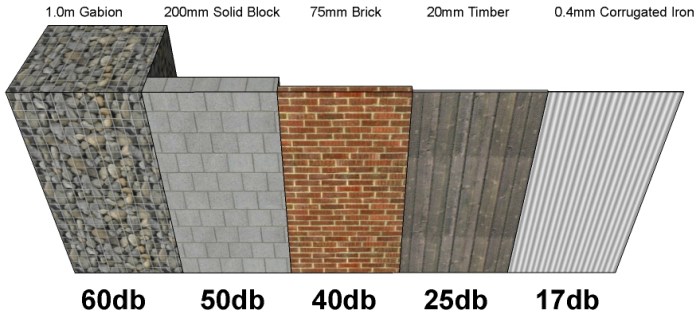
Enhancing Fence Performance for Noise Reduction
Acoustic Insulation Techniques for Fence Construction
To further enhance the noise reduction capabilities of fences, various acoustic insulation techniques can be employed during the construction process. These techniques involve adding sound-absorbing materials or insulation layers within the fence structure. By incorporating these techniques, fences can effectively dampen sound waves and minimize noise transmission.
Proper Installation Methods for Maximum Noise Reduction
Proper installation methods are crucial to ensure maximum noise reduction capabilities of fences. The fence should be securely anchored into the ground and properly aligned to minimize gaps or openings. Attention should be given to sealing any potential sound leakage points, such as joints or connections. Consulting with experienced fence professionals or following manufacturer guidelines during the installation process is essential for achieving optimal noise reduction performance.
Maintenance Practices to Ensure Long-Term Effectiveness
Regular maintenance practices are necessary to ensure the long-term effectiveness of noise reduction fences. Wooden fences may require periodic staining or sealing to prevent decay and maintain their sound-absorbing properties. Vinyl fences should be cleaned regularly to prevent dirt buildup that may hinder their noise reduction capabilities. Metal fences should be inspected for any signs of rust or damage, and repairs should be promptly addressed. By incorporating regular maintenance practices, noise reduction fences can maintain their effectiveness for years to come.
Regulations and Codes Regarding Noise Reduction Fences
Local Noise Regulations and Their Impact on Fence Construction
Before constructing noise reduction fences, it is essential to research and understand local noise regulations and codes. Different regions may have specific guidelines regarding fence height, material usage, and permitted noise levels. By complying with these regulations, property owners can ensure that their noise reduction fences align with legal requirements and avoid potential issues with local authorities.
Legal Requirements for Noise Reduction Fences in Residential Areas
In residential areas, legal requirements for noise reduction fences vary depending on local jurisdictions. These requirements typically include limitations on fence height, setback distances from property lines, and materials used. It is important to consult local authorities or obtain relevant permits to ensure compliance with legal requirements when constructing noise reduction fences in residential areas.
Permits and Guidelines for Installing Noise-Reducing Fences
Installing noise-reducing fences may require obtaining permits or following specific guidelines. These permits and guidelines often outline the required fence specifications, including height, construction materials, and design. It is essential to explore the permit and guideline requirements to ensure that the noise reduction fence installation complies with the local regulations and codes.
Real-Life Examples of Noise Reduction Fences
Case Studies Showcasing Successful Noise Reduction Fence Installations
Real-life case studies provide valuable insights into the effectiveness of noise reduction fences. These case studies showcase various noise reduction fence installations in different settings, such as residential neighborhoods, commercial areas, or industrial zones. By analyzing these examples, property owners can gain a better understanding of the right fence types, materials, and installation techniques for their specific noise reduction needs.
Testimonials from Homeowners Who Have Implemented Noise-Reducing Fences
Testimonials from homeowners who have successfully implemented noise-reducing fences can help shed light on the real-world benefits and challenges of such installations. These testimonials provide firsthand experiences and feedback on factors such as fence selection, noise reduction effectiveness, and overall satisfaction. By reading these testimonials, property owners can gain valuable perspectives and insights when considering noise reduction fence installations.
Comparison of Different Noise Reduction Fence Projects
Comparing different noise reduction fence projects can help property owners make informed decisions based on the specific requirements and constraints of their own properties. These comparisons can take into account factors such as the location, type of noise source, fence height and materials used, and the overall effectiveness of the noise reduction measures. By analyzing and comparing these projects, property owners gain a broader understanding of the available options and best practices for noise reduction fence installations.
Cost Considerations for Noise Reduction Fences
Factors Influencing the Cost of Noise-Reducing Fences
Various factors influence the cost of noise-reducing fences. These factors include the selected fence type, materials used, fence height and length, site preparation requirements, installation labor costs, and any additional features or customization. Understanding these factors is essential in determining the overall cost and budget for noise reduction fence installations.
Budget-Friendly Options for Noise Reduction
Noise reduction fence projects can be tailored to fit different budgets. Property owners can explore cost-effective options such as choosing materials that offer good noise reduction properties at a lower price point, considering fence designs that require minimal maintenance, or selecting fence heights that strike a balance between cost and noise reduction effectiveness. By exploring budget-friendly alternatives, property owners can achieve noise reduction goals without compromising financial constraints.
Return on Investment for Noise Reduction Fence Installations
Investing in noise reduction fence installations offers long-term benefits that go beyond noise reduction alone. Noise reduction fences enhance property value, provide increased privacy and security, and contribute to a more pleasant living environment. These added benefits can result in a positive return on investment by boosting property resale value and improving the quality of life for occupants. Considering the long-term value and benefits associated with noise reduction fences is essential when evaluating the overall cost-effectiveness of such installations.
Additional Benefits of Noise Reduction Fences
Increased Privacy and Security
One of the notable benefits of noise reduction fences is the increased privacy and security they offer. By obstructing the view and sound transmission, noise reduction fences create a more secluded living environment, free from prying eyes and unwanted noise intrusion. This added privacy and sense of security contribute to a more comfortable and enjoyable living experience.
Protection from External Elements
In addition to reducing noise, noise reduction fences also provide protection from external elements such as wind, dust, and debris. They act as a physical barrier, shielding the property and its occupants from outdoor nuisances and adverse weather conditions. This added protection ensures a more pleasant and safe living environment.
Enhancement of Property Value
Noise reduction fences can significantly enhance the value of a property. The benefits of reduced noise levels, increased privacy, and improved quality of life can make a property more attractive to potential buyers. Noise reduction fences also add to the visual appeal of a property, contributing to its overall curb appeal. Investing in noise reduction fences can result in higher property resale value and greater marketability in the future.
Environmental Impact of Noise Reduction Fences
Utilizing Eco-Friendly Materials for Sustainable Fence Construction
Environmental sustainability is a crucial consideration in fence construction. Opting for eco-friendly materials, such as sustainably sourced wood or recycled materials, can significantly reduce the environmental impact of noise reduction fences. These materials minimize deforestation and promote the efficient use of resources, ultimately contributing to a greener and more sustainable future.
Reducing Carbon Emissions with Noise-Reducing Fences
Noise reduction fences can indirectly contribute to reducing carbon emissions. By creating quieter environments, noise reduction fences mitigate the need for high noise-producing activities or equipment, such as excessive use of power tools or machinery. This reduction in noise-related activities can lead to decreased carbon emissions, contributing to global efforts to combat climate change.
Wildlife Conservation Considerations
When planning and installing noise reduction fences, it is essential to consider their impact on wildlife habitats. Fences should be designed and constructed in a way that allows for the safe passage of wildlife, particularly in areas with ecological significance. By incorporating wildlife-friendly features, such as fence gaps or designated wildlife corridors, property owners can ensure that noise reduction measures do not negatively impact local wildlife populations.
Addressing Common Concerns and FAQs
Maintenance Requirements for Noise Reduction Fences
Maintaining noise reduction fences is crucial for their long-term effectiveness. Regular inspections should be conducted to identify any signs of damage, such as rot, rust, or loose panels, which can compromise the noise reduction capabilities of the fence. Cleaning the fence periodically, removing any debris or vegetation buildup, and repairing or replacing damaged components are important maintenance practices for noise reduction fences.
Potential Limitations and Drawbacks of Noise-Reducing Fence Options
While noise reduction fences offer numerous benefits, it is important to acknowledge their potential limitations and drawbacks. Factors such as the distance between the noise source and the fence, the type and intensity of the noise, and the overall environmental conditions can influence the effectiveness of noise reduction measures. Understanding these limitations can help property owners set realistic expectations and choose the most suitable noise reduction fence option for their specific requirements.
Noise-Reduction Alternatives to Fencing Solutions
In some cases, noise reduction fences may not be the most appropriate or feasible solution for addressing excessive noise. Property owners can explore alternative noise reduction methods such as soundproof windows, acoustic panels, or landscaping techniques, depending on the specific noise source and property layout. It is important to consult with noise control experts to determine the most suitable noise reduction strategy for each unique situation.
Conclusion
In a world filled with noise, finding peace and tranquility is paramount for our well-being. Noise reduction fences play a vital role in creating a peaceful environment by acting as barriers to noise pollution and enhancing privacy, security, and property value. Understanding the functionality, design considerations, and various types of noise reduction fences can help property owners make informed decisions that align with their specific needs and budgets. By investing in noise reduction fences, we can transform our living spaces into havens of peace and serenity, ensuring a better quality of life for ourselves and future generations.
